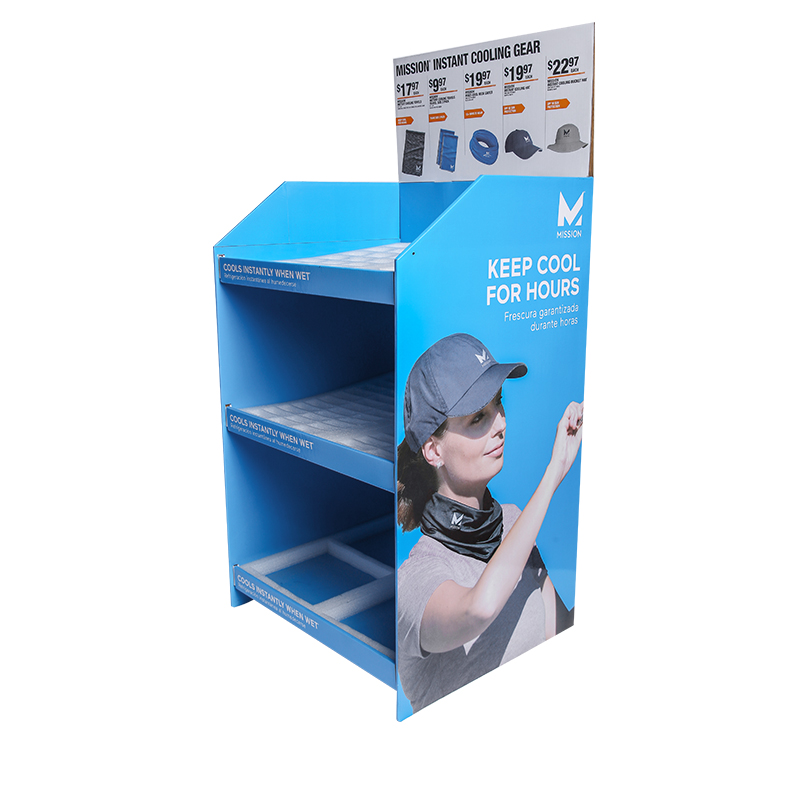-
 +86-0557-3781111 / +86-0571-56396277
+86-0557-3781111 / +86-0571-56396277
 +86-0557-3781111 / +86-0571-56396277
+86-0557-3781111 / +86-0571-56396277
Packaging design plays a crucial role in simplifying the assembly process for cardboard counter displays by ensuring that the components are organized, protected, and easy to access. Here’s how effective packaging design contributes to a smoother assembly experience:
Organized Component Layout
Step-by-Step Arrangement: Packaging the components in the order they are needed for assembly reduces the time spent searching for parts. This organized layout allows the assembler to follow a logical sequence, making the process more intuitive and efficient.
Labeled Sections: Clear labeling on the packaging or on the components themselves helps users quickly identify the right pieces, reducing confusion and errors during assembly.
Protection During Transit
Damage Prevention: Well-designed packaging protects the components from damage during shipping and handling. Intact pieces are easier to assemble, whereas damaged parts can complicate the process or result in an unstable display.
Reinforced Edges: Packaging with reinforced edges or padding around delicate parts ensures that the structural integrity of the components is maintained, which is crucial for a successful assembly.
Compact and Logical Packing
Space Efficiency: Compact packaging minimizes the size of the package, making it easier to handle and transport. Efficient use of space within the packaging ensures that all parts are accessible without the need to unpack everything at once.
Reduced Unpacking Time: Logical packing, where the most essential parts are on top, speeds up the unpacking process, allowing the assembly to begin immediately without unnecessary delays.
Clear Instructions and Visual Aids
Incorporated Instructions: Including clear assembly instructions within the packaging, either printed on the inside or as a separate guide, helps users understand the assembly process right from the start.
Visual Aids: Diagrams or photos integrated into the packaging can provide a visual guide, making it easier for users to match components and understand how they fit together.

Ease of Handling
Ergonomic Design: Packaging designed for easy handling, such as with cut-out handles or lightweight materials, simplifies the transportation of the display components to the assembly site.
Pre-Folded or Pre-Scored Components: Packaging that includes pre-folded or pre-scored components can reduce the effort required for assembly, as the pieces are already partially shaped and easier to manipulate.
Minimizing Waste and Complexity
Minimal Packaging Waste: Packaging that is minimal yet protective reduces the amount of waste generated and simplifies the disposal process after assembly. This is especially important in retail settings where space and waste management are concerns.
Simple Unboxing Experience: A straightforward unboxing process, where components are easy to remove from the packaging without excessive wrapping or unnecessary materials, makes the initial setup quicker and more user-friendly.
Modular or Reusable Packaging
Modular Packaging: Modular packaging designs that allow parts to be stored and transported in a way that supports easy reassembly (e.g., for trade shows or temporary displays) can greatly enhance convenience for users who need to frequently assemble and disassemble the display.
Reusable Packaging: Packaging that can be reused for storage or transport after disassembly ensures that the components remain organized and protected between uses, reducing wear and tear and extending the lifespan of the display.
Effective packaging design simplifies the assembly process for cardboard counter displays by organizing components, protecting them during transit, making the unpacking process intuitive, and providing clear instructions, all of which contribute to a more efficient and user-friendly assembly experience.
Annhiu Address: Yishan Road and Qingshengou Road Intersection, Suzhou Economic Development Zone, Anhui, China
Tel: +86-0557-3781111
E-mail: [email protected]
Hangzhou Address: Building 3, No.286, Renliang Road, Renhe Street, Yuhang District, Hangzhou, Zhejiang, China
Tel: +86-0571-56396277
E-mail: [email protected]
Copyright © Hangzhou Shengpin Packaging Co., Ltd. All Rights Reserved.
